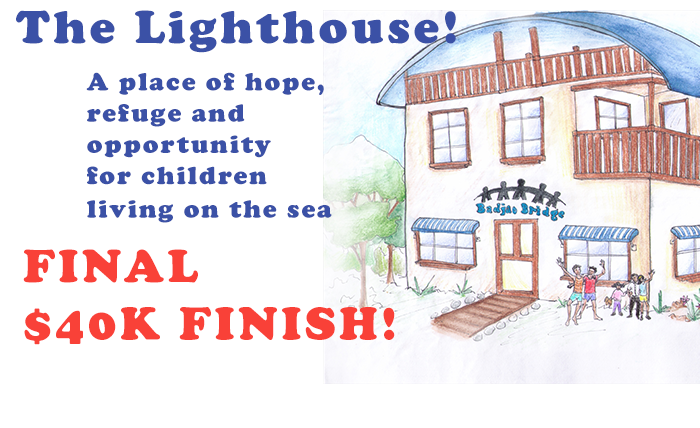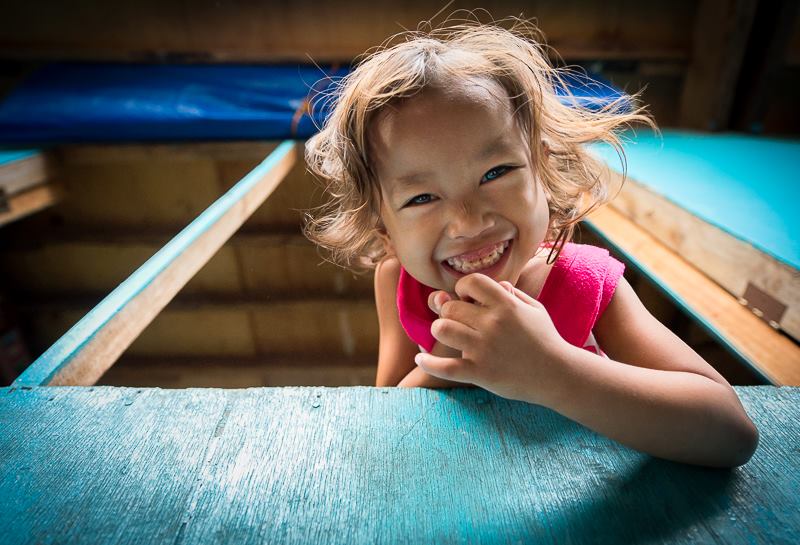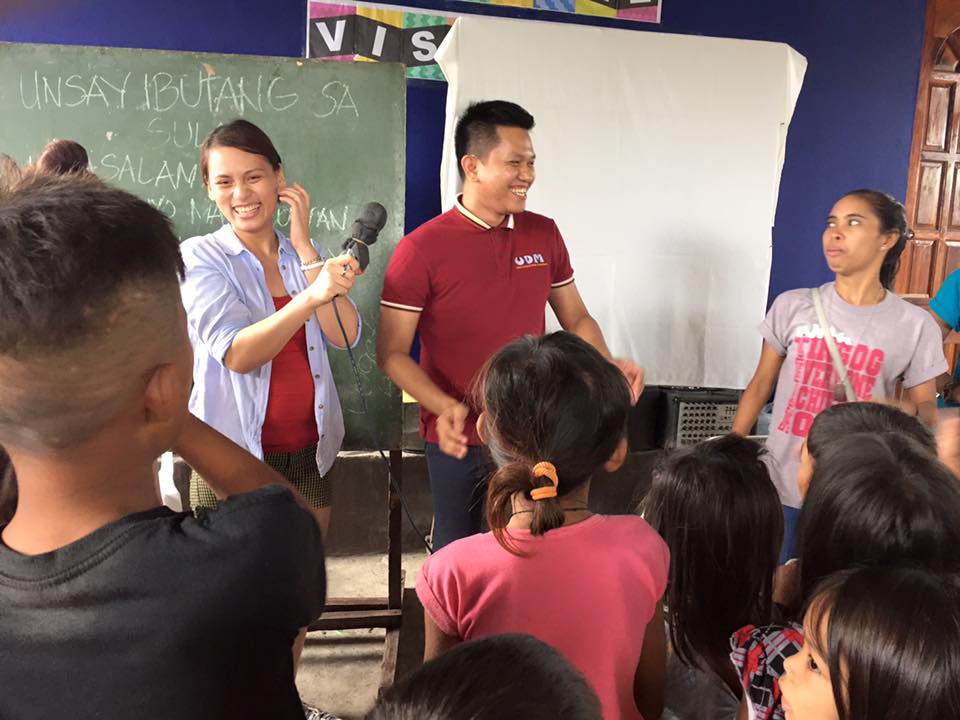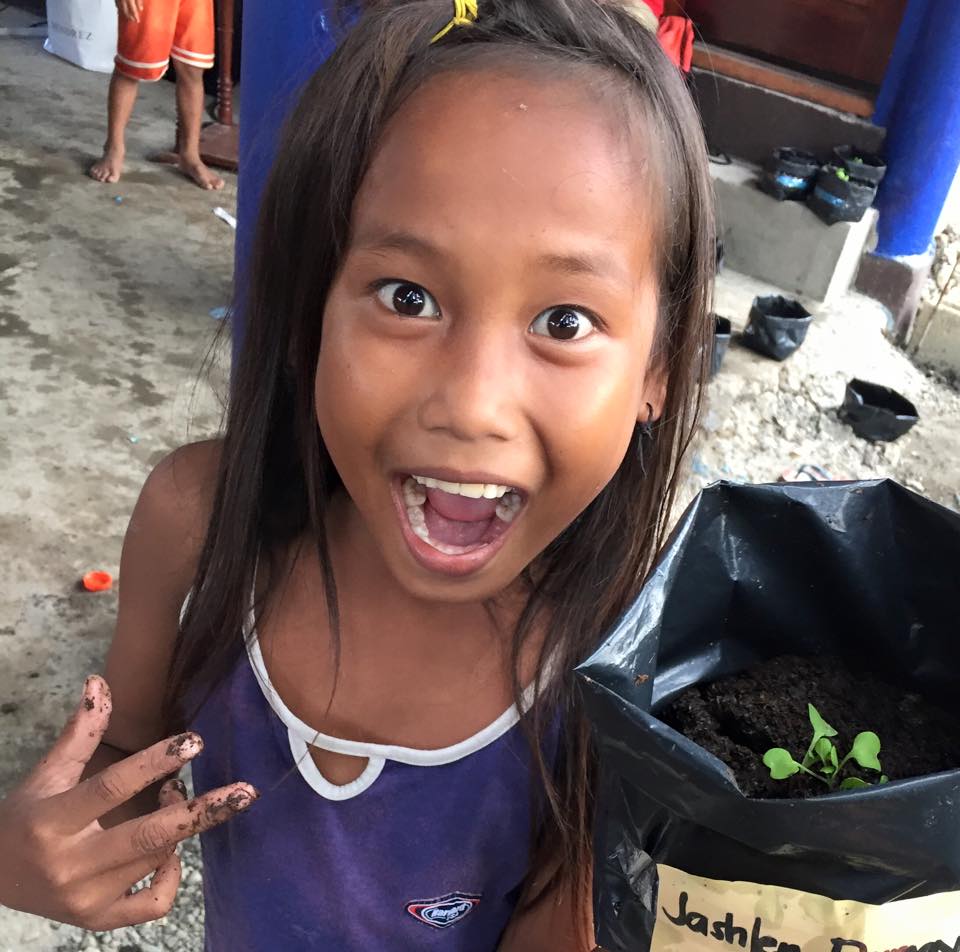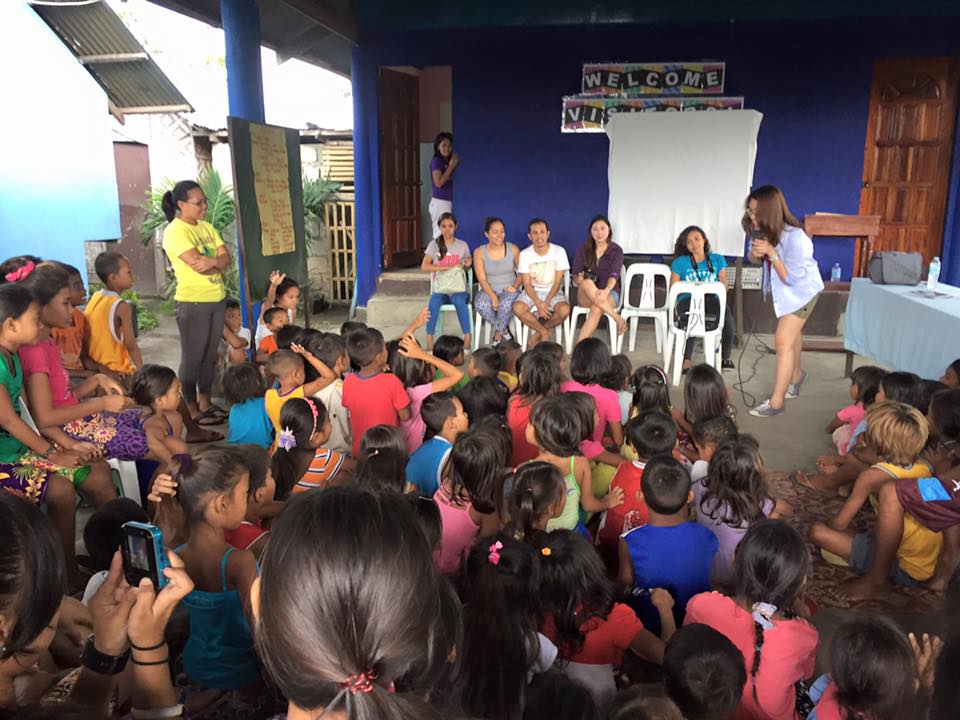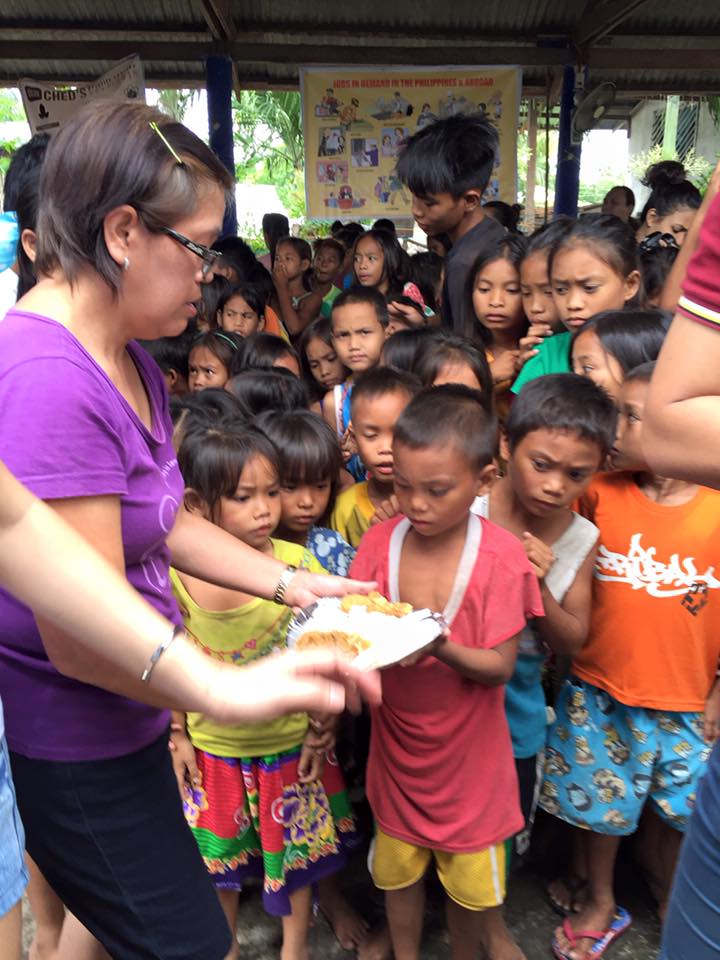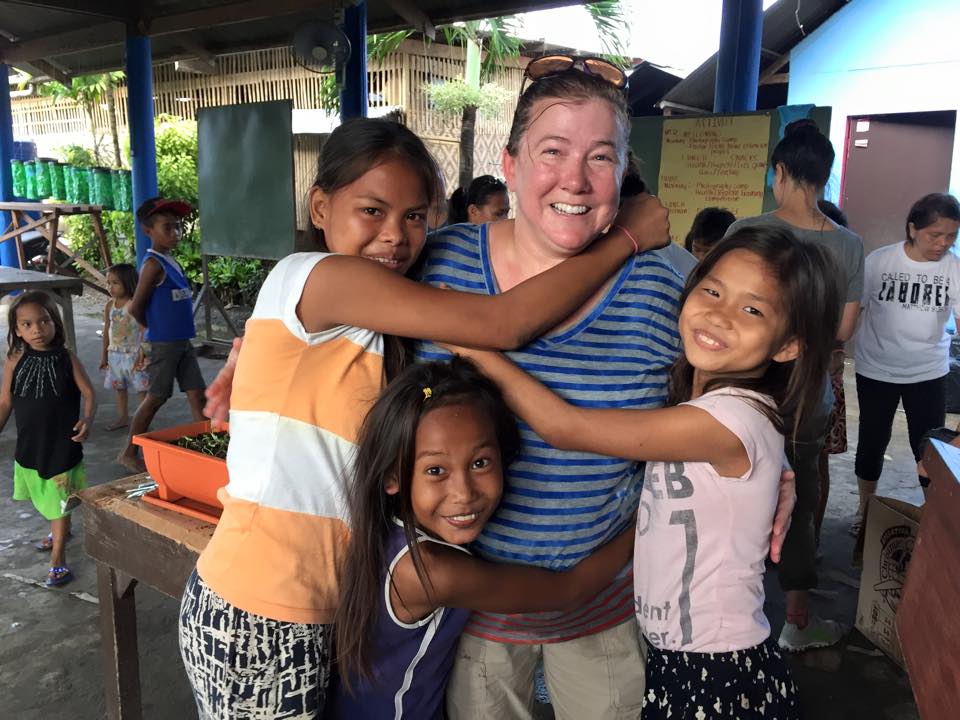It was a chaotic and frightening scene next to our Lighthouse Learning Center. In the middle of the dark and overcrowded community, there was a bright wall of fire that quickly spread to adjacent ramshackle dwellings. Screams for help were heard and our staff who were still at our school sprung into action.
The Lighthouse Learning Center is on top of this hill just left of the fire.
Fires in these kinds of poor communities typically end in complete destruction. Thousands of homes have been destroyed before in similar situations and everyone feared this would end in the same way. In our community, next to the sea-dwelling Badjao, there are no public roads for firefighting equipment. Even worse, there are no fire hydrants and water to the entire community was shut off the past two weeks due to a lack of local supply (a very common situation). We had discussed at our local board meeting three weeks ago about adding more fire extinguishers than were required and also installing a long fire hose to be connected to our two 500 gallon water tanks. We were uncomfortable with the cost involved because we hadn't anticipated this $300 expense, but our local director made the wise decision to get it installed right away.
The flames were coming from several houses that were fully consumed and poised to spread to the entire community of over 12,000 people. It was then our junior teacher Ann, who we recently hired to help our kindergarten class, ran for the 250-foot fire hose. Ann remained calm and helped with the first response. Others grabbed our fire extinguishers and slowed the fire just long enough until the firemen finally arrived. Not able to bring enough water then, the firemen used our water tanks too. After one hour it was put out and although 10 houses were destroyed, no one was killed or injured. The displaced families are being housed in our classroom for now until they can rebuild their homes.
Ann is pictured second from the right.
We are thankful for our all-female staff who sacrificially and heroically help kids every day... and are apparently qualified firefighters too! If you've had anything to do with supporting our organization, an entire community is grateful to you. We didn't intend our building to serve as the local fire department, but it sure did help prevent major catastrophe. Thank God!















